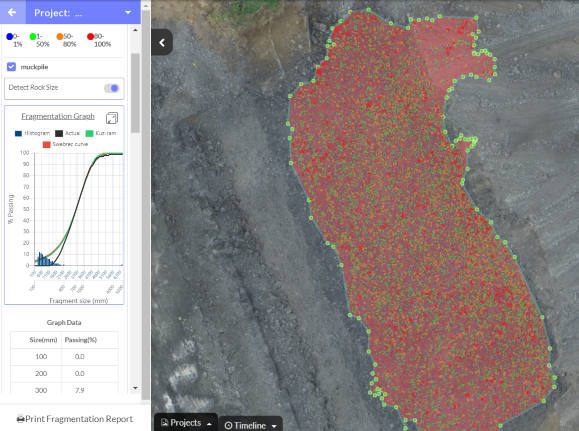Making Depleted Deposits Profitable by Increasing Extraction Efficiency
The Depletion of Easily Accessible and High Quality Deposits Makes Smarter Mining Critical for The Remaining Deposits
Centuries of mining has resulted in the depletion of the most lucrative ore deposits. Yet global demand for those same ores is increasing. Optimizing ore extraction efficiencies is critical for continuing mine viability and profitability. A perfect example of this is phosphate rock. Phosphate rock is used to make fertilizer for agriculture and the demand for affordable fertilizer is increasing as the population of the earth grows exponentially.
Continuing innovation and technological advancements are critical to maintaining the availability and pricing of minerals as easily accessible and high quality ore deposits are exhausted.
After decades of mining, the easiest and best phosphate sources are being used up. While experts estimate we have 300-400 years of phosphate reserves left to mine they are increasingly difficult to reach and often of a poorer quality.
The quality and accessibility of currently available phosphate rock reserves are declining, and the costs to mine, refine, store, and transport them are rising. Columbia University
Now, only 5 countries control 90% of the world's phosphate, and 1 country, Morocco, controls 85% of it. It is estimated that the US has only 25 years of phosphate rock left, and what is available is beset by environmental and regulatory hurdles. Phosphate is not unique, many of the world's most critical ores, minerals, and metals are experiencing this trend.
The solution to this problem? Mine more efficiently.
If you have to mine harder then mine smarter. Increase efficiency in the location and extraction phases and it is possible to increase yields by up to 30% or 40%. Columbia University.
How to Increase Extraction Efficiency?
1. Map Before You Blast
Technology is making it easier than ever to know where deposits are before even breaking ground. While traditionally done with core samples, two growing technologies provide instant data on what is located underground and where.
-
Hyperspectral Imaging with Mapping Analytics
Using hyperspectral imaging, a drone can fly over a site and "see" through the surface to locate the desired ore while still in the ground. This data is sent to an analytics platform like Strayos which uses Artificial Intelligence to create subsurface mapping of the deposit so you can plan your mine and your blast before even breaking ground. -
Smart Drills with Measure While Drilling Analytics.
Smart drills send the data they encounter while drilling instantly to a platform like Strayos which takes that data and creates 3D interactive models that the driller and blaster can use in real time to adjust drill plans as needed and to plan future drilling. Smart drills can measure speed, location, rock density, burden, and much more. For a case study by Komatsu on how their smart drills can benefit fragmentation results, go here.
2. Blast Optimization
- Pre- Blast Modeling
Strayos' pre-blast 3D models take data gathered by drones, smart drills, cameras, and satellites and generates a 3D interactive model that calculates burden and blast pattern. Blasters can test hypothetical blast designs before detonation to determine optimal layout, depth, and explosive amount for the most efficient blast possible. For cast blasting, Strayos' model can maximize earth movement to best uncover the sought after deposit, move the overburden to the desired location, and reduce the amount of additional machine work required to move the remaining overburden. Utilizing this technology reduces overuse of explosives, wasteful unwanted rock generation, and poor quality fragmentation that requires additional processing. - Fragmentation Prediction
Strayos' platform further predicts the rock fragmentation expected from each theoretical blast. Proper fragmentation allows for better access to the ore as well as reduction of excess rock waste and processing by-products.
- Precision Blasting
AI and modeling allow for precision blasting that separates external dilutions from quality ore deposits pre-processing.
Turning Resources Into Reserves
Phosphate mining in Florida is generally stopped at the dolomite layer at the bottom of the phosphate bearing unit. There may be several meters of phosphate rock deposits that are not currently being mined because of the magnesium contained in dolomite. Strayos' advanced technologies such as pre-blast modeling and fragmentation prediction could be used to maximize the recovery of this currently untapped and abandoned valuable resource thus increasing the phosphate yield without increasing the environmental disruption.
Better extraction methods create better yields. As ore deposits become increasingly depleted and of lower quality, mines must become more efficient at accessing the remaining ore in order to maintain profitability while keeping commodity costs low enough to feed demand.

Check out our 2 Free E-books on AI applications for the drilling, blasting, and mining industries to see all the amazing advances that are available.
AI Guide for Drilling and Blasting
AI Guide for Mining
TLDR? Watch our videos instead:
YouTube

